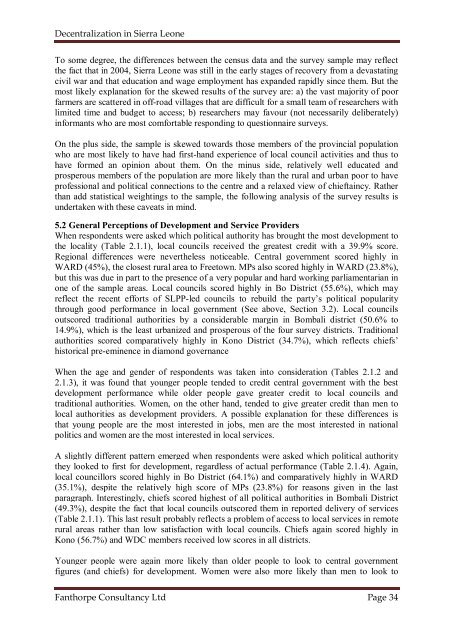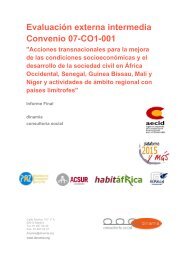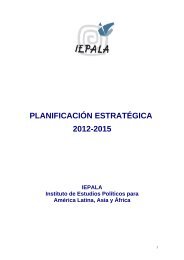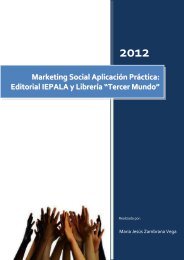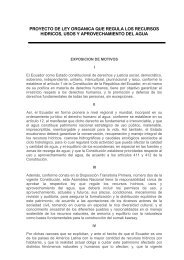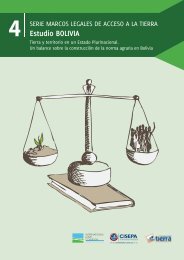Decentralization in Sierra Leone - Research for Development
Decentralization in Sierra Leone - Research for Development
Decentralization in Sierra Leone - Research for Development
You also want an ePaper? Increase the reach of your titles
YUMPU automatically turns print PDFs into web optimized ePapers that Google loves.
<strong>Decentralization</strong> <strong>in</strong> <strong>Sierra</strong> <strong>Leone</strong>To some degree, the differences between the census data and the survey sample may reflectthe fact that <strong>in</strong> 2004, <strong>Sierra</strong> <strong>Leone</strong> was still <strong>in</strong> the early stages of recovery from a devastat<strong>in</strong>gcivil war and that education and wage employment has expanded rapidly s<strong>in</strong>ce them. But themost likely explanation <strong>for</strong> the skewed results of the survey are: a) the vast majority of poorfarmers are scattered <strong>in</strong> off-road villages that are difficult <strong>for</strong> a small team of researchers withlimited time and budget to access; b) researchers may favour (not necessarily deliberately)<strong>in</strong><strong>for</strong>mants who are most com<strong>for</strong>table respond<strong>in</strong>g to questionnaire surveys.On the plus side, the sample is skewed towards those members of the prov<strong>in</strong>cial populationwho are most likely to have had first-hand experience of local council activities and thus tohave <strong>for</strong>med an op<strong>in</strong>ion about them. On the m<strong>in</strong>us side, relatively well educated andprosperous members of the population are more likely than the rural and urban poor to haveprofessional and political connections to the centre and a relaxed view of chiefta<strong>in</strong>cy. Ratherthan add statistical weight<strong>in</strong>gs to the sample, the follow<strong>in</strong>g analysis of the survey results isundertaken with these caveats <strong>in</strong> m<strong>in</strong>d.5.2 General Perceptions of <strong>Development</strong> and Service ProvidersWhen respondents were asked which political authority has brought the most development tothe locality (Table 2.1.1), local councils received the greatest credit with a 39.9% score.Regional differences were nevertheless noticeable. Central government scored highly <strong>in</strong>WARD (45%), the closest rural area to Freetown. MPs also scored highly <strong>in</strong> WARD (23.8%),but this was due <strong>in</strong> part to the presence of a very popular and hard work<strong>in</strong>g parliamentarian <strong>in</strong>one of the sample areas. Local councils scored highly <strong>in</strong> Bo District (55.6%), which mayreflect the recent ef<strong>for</strong>ts of SLPP-led councils to rebuild the party’s political popularitythrough good per<strong>for</strong>mance <strong>in</strong> local government (See above, Section 3.2). Local councilsoutscored traditional authorities by a considerable marg<strong>in</strong> <strong>in</strong> Bombali district (50.6% to14.9%), which is the least urbanized and prosperous of the four survey districts. Traditionalauthorities scored comparatively highly <strong>in</strong> Kono District (34.7%), which reflects chiefs’historical pre-em<strong>in</strong>ence <strong>in</strong> diamond governanceWhen the age and gender of respondents was taken <strong>in</strong>to consideration (Tables 2.1.2 and2.1.3), it was found that younger people tended to credit central government with the bestdevelopment per<strong>for</strong>mance while older people gave greater credit to local councils andtraditional authorities. Women, on the other hand, tended to give greater credit than men tolocal authorities as development providers. A possible explanation <strong>for</strong> these differences isthat young people are the most <strong>in</strong>terested <strong>in</strong> jobs, men are the most <strong>in</strong>terested <strong>in</strong> nationalpolitics and women are the most <strong>in</strong>terested <strong>in</strong> local services.A slightly different pattern emerged when respondents were asked which political authoritythey looked to first <strong>for</strong> development, regardless of actual per<strong>for</strong>mance (Table 2.1.4). Aga<strong>in</strong>,local councillors scored highly <strong>in</strong> Bo District (64.1%) and comparatively highly <strong>in</strong> WARD(35.1%), despite the relatively high score of MPs (23.8%) <strong>for</strong> reasons given <strong>in</strong> the lastparagraph. Interest<strong>in</strong>gly, chiefs scored highest of all political authorities <strong>in</strong> Bombali District(49.3%), despite the fact that local councils outscored them <strong>in</strong> reported delivery of services(Table 2.1.1). This last result probably reflects a problem of access to local services <strong>in</strong> remoterural areas rather than low satisfaction with local councils. Chiefs aga<strong>in</strong> scored highly <strong>in</strong>Kono (56.7%) and WDC members received low scores <strong>in</strong> all districts.Younger people were aga<strong>in</strong> more likely than older people to look to central governmentfigures (and chiefs) <strong>for</strong> development. Women were also more likely than men to look toFanthorpe Consultancy Ltd Page 34


